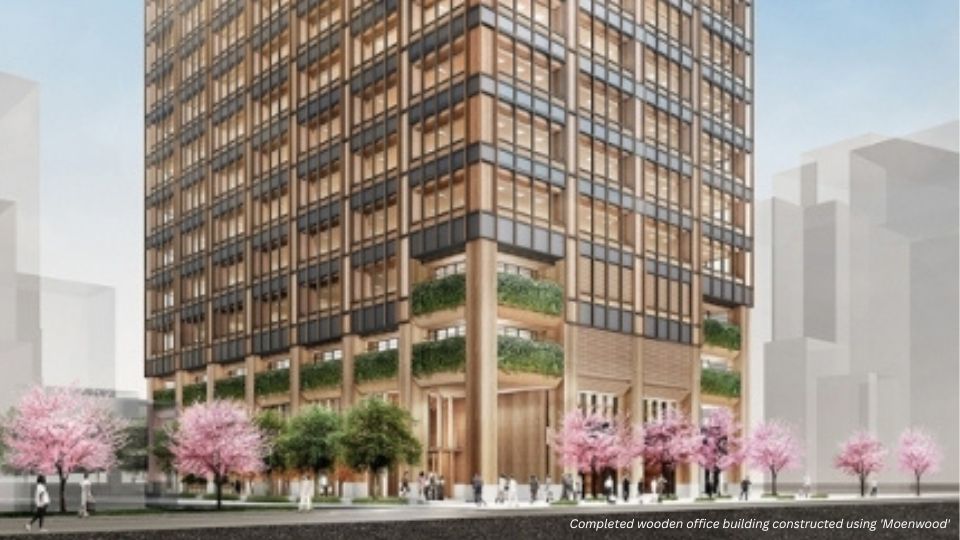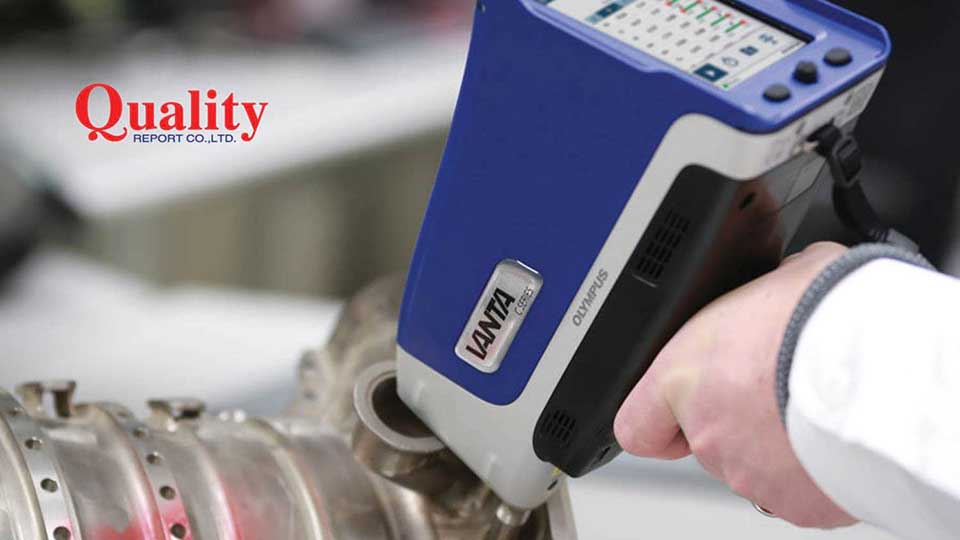
Japan's Construction Industry Embraces Wood for a Sustainable and Carbon-Neutral Future
CLT is fireproof, earthquake-resistant, and highly durable, contributing to decarbonization. The use of wooden construction and wood-based buildings is rising in the non-residential sector. This is due to the growing interest in wood in the wake of the big wave of decarbonization. It is expected to contribute to the effective use of forest resources and the promotion of forestry, and an environment is being created to promote its widespread use. In anticipation of future demand growth, construction and real estate companies are accelerating various efforts, such as using wood for interior and exterior decoration and constructing wooden buildings.
Legislation to Boost Domestic Timber Production
The construction industry has been working on wooden construction and using wood for building for about 20 years. This trend has accelerated in recent years, with companies racing to develop technologies that improve fire resistance and earthquake resistance. These technologies have led to the construction of mid- to high-rise buildings.
The trigger was the government’s declaration of carbon neutrality (net zero greenhouse gas emissions) as a goal by 2050. Furthermore, the spread of ideas such as the circular economy and nature positive (nature regeneration) has also become a major driving force for the use of wood.
One of the benefits of using wood is its decarbonization effect. In addition to fixing carbon dioxide (CO2) over the long term, wood requires less energy in the manufacturing, processing, and construction stages than steel frames or reinforced concrete (RC), helping to significantly reduce CO2 emissions.

Legislative developments are also a driving force. In 2010, the “Act on the Promotion of the Use of Wood in Public Buildings, etc.” was enacted to promote the use of wood in public buildings, to expand demand for domestic timber. In 2021, this was revised and implemented as the “Act on the Promotion of the Use of Wood in Buildings, etc., for Contributing to the Realization of a Carbon-Free Society,” which encourages the use of wood in private buildings.
Technological innovation is also progressing. One that has received particular attention is cross-laminated timber (CLT). This is a wood panel building material made by arranging planks and then laminating and gluing them so that the grain direction is perpendicular to the board. It has excellent strength, fire resistance, and earthquake resistance.
The construction and use of wood in buildings also serve to create demand for domestic timber. Trees planted under the postwar reforestation policy are now 50 to 60 years old and have reached maturity as lumber. If products made from these materials can generate profits, this could lead to the revival of forestry and the revitalization of rural areas.
Takenaka Corporation
Construction Begins on Tallest Wooden Building in City Center
Takenaka Corporation is a pioneer in the design and construction of wooden buildings. The company’s strength lies in the technology it has developed for large, high-rise buildings. For example, its fire-resistant laminated lumber “Moenwood” has a unique fire-stopping mechanism that allows it to be used in an exposed finish that leaves the wood visible.
A symbol of wooden architecture, which the company is responsible for designing and constructing, is the tallest wooden rental office building in Japan, which Mitsui Fudosan has begun constructing in Nihonbashi, Tokyo. With 18 floors above ground and a height of 84 meters, it will be the largest and tallest wooden high-rise building in Japan. It is a hybrid structure of wood and steel, and an important element is the fire-resistant wooden construction technology used for the main structural members. It will incorporate an abundance of technologies that will be applied for the first time in Japan, such as laminated timber with a fire resistance of three hours.
The construction of a large wooden building in the city center will have a big impact and is expected to have a ripple effect on expanding demand for wooden buildings in the future. Atsushi Hanai, head of the Wooden Construction and Wood Building Promotion Headquarters, points out that “there is a lot that needs to be done, including reducing costs.” He believes that the immediate challenges will be expanding the applicable technology and increasing the number of people involved in design and construction.
Obayashi Corporation
“Pure Wood” Building Durability Verification
Obayashi Corporation has been researching the use of wood in mid- to high-rise buildings since before the Act on Promotion of the Use of Wood in Public Buildings came into effect. The result of this research is the Port Plus, built in Naka Ward, Yokohama. The building is a pure wood structure with all wooden pillars, beams, and floors, and has been used as a training facility since 2010.
The 11-story building, 44 meters tall, is the tallest fireproof wooden building in Japan, and its wooden beams and columns are made of structural materials that have been certified as fire-resistant for three hours.
One issue facing the widespread use of wooden buildings is cost. From the many benefits of wooden materials, such as lightweight, ease of processing, fragrance, and insulation, “it is necessary to show which is the most optimal and make visible the costs required to achieve that,” points out Toshinori Yagi, deputy general manager of the Carbon Neutral Wood Solutions Department in the Sales Headquarters.
Another theme is monitoring the aging of wood. Since there is no other wooden building of this scale, the exterior materials will be checked once a year to see how they age. The plan is to continually verify their durability.
Training space made of wood.
Taisei Corporation
A Long-Lasting Pedestrian Bridge Made of Small Diameter Materials
Taisei Corporation is working on various initiatives as a group with the goal of promoting the use of wood in the planning, design, and construction of buildings. The company is focusing on Zero Carbon Buildings (ZCBs), which essentially eliminate CO2 emissions over the life cycle of buildings. “In the future, ZEBs (Zero Energy Buildings) will become the norm, and we will likely move to ZCBs,” said Hiroshi Umemori, head of the Wooden Building Promotion Office in the Advanced Design Department of the Design Headquarters.
To this end, the company has developed a unique system called “T-ZCB” that visualizes CO2 emissions and the effects of reduction technologies in the life cycle of a building at the early planning stage and systematically evaluates decarbonization. The system is being verified at the company’s own facilities with the aim of realizing zero-carbon buildings.
To actively use wood in indoor and outdoor buildings, the company is also promoting the development of weather-resistant and durable wooden buildings. As part of this, the company constructed a wooden pedestrian bridge at its technical center (Totsuka-ku, Yokohama) that uses small-diameter timber to achieve a long-span structure and long life. This result has significantly expanded the uses of small-diameter timber, which has lower strength and rigidity than large-section laminated timber, and is expected to promote its use in the future.
A wooden pedestrian bridge with a long service life
Mitsubishi Estate Group
Wooden Flooring in the Office
The Mitsubishi Estate Group has been focusing on the design and functionality of wood and has been working on wooden construction and wood-based construction projects using CLT since around 2016. It is used for the structures and interiors of buildings, hotels, airports, etc.
As a new way to utilize CLT, the company has jointly developed a new flooring system with Nomura Kogei Co., Ltd., and others. The product uses exposed domestic natural wood, and the company has begun manufacturing and selling it through its group company, MEC Industry (Kirishima City, Kagoshima Prefecture).
“We want to expand the use of wood to provide comfort to our customers,” explains Yoshitake Morishita, head of the Related Business Promotion Department and the Wooden Construction Business Promotion Office, explaining the aim of the development. As the first step, a 100-square-meter free-access floor that can store power sources and wiring under the floor was installed at an innovation facility operated by Mitsubishi Estate in Marunouchi, Tokyo.
The expected needs are mainly office buildings, commercial facilities, schools, etc. The company plans to increase the number of applications by promoting wood’s lighter weight compared to conventional steel materials, its high strength and carbon fixation properties, as well as the unique texture of wood, such as its scent and feel.
Floor system developed using CLT
#Construction #Japan #Sustainable #carbonneutrality #อุตสาหกรรมก่อสร้าง #Mreport #ข่าวอุตสาหกรรม
Source: Nikkan Kogyo Shimbun






